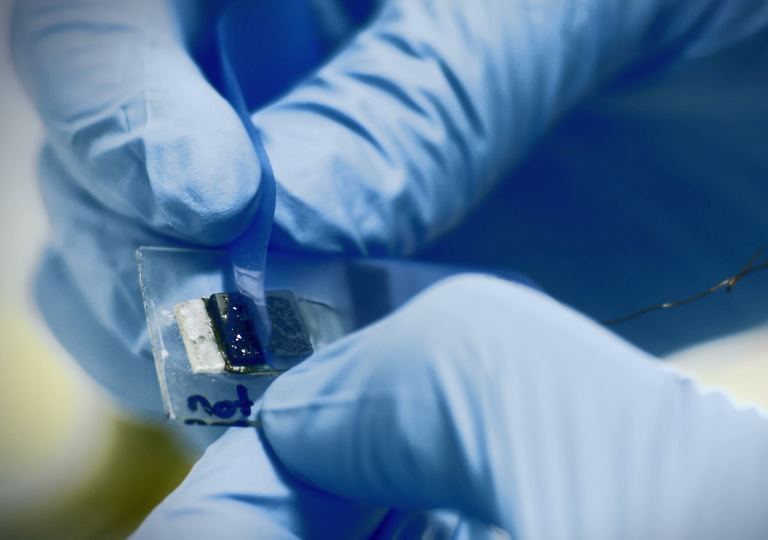PhD student Seb Leaper shares his award-winning enterprise project, where he aims to help solve the global water crisis by using graphene to desalinate sea water.
'I think you can tick it off and say ‘water scarcity is no longer a problem.’ Share on X About 1% of the world’s population uses desalinated water. By 2025, this will increase to 14%. Share on X Half of the world’s hospital beds are filled with people suffering from water-related illnesses. Share on X“Around five million people die every year from water-related illnesses, and about four million of those are children.”
The stats around the global water crisis are staggering. One in nine people worldwide have no access to clean drinking water, one in three do not have adequate sanitation facilities. Half of the world’s hospital beds are filled with people suffering from water-related illnesses.
It’s not just the cost to human life which is the problem. Every year, 443 million school days are lost to water-related diseases and girls in developing countries often have to drop out at puberty due to a lack of sanitation facilities.
The problem is hugely damaging to the economy as well. It is estimated that 40 billion hours of labour are lost every year in Sub-Saharan Africa due to people having to travel to collect water. That amount of labour is equivalent to a whole year’s labour for the entire population of France, the world’s sixth largest economy.

Despite the harrowing picture the statistics paint, PhD student Seb Leaper is cautiously optimistic for the future.
“I think it is a problem you can solve, I think you can tick it off and say ‘water scarcity is no longer a problem’, but you have to do it simply, reliably, and cheaply,“ he says.
Desalination
Seb is researching the use of graphene membranes in water desalination. Desalination is essentially removing salt and impurities from undrinkable water, usually seawater, in order to make it drinkable.
“Even though two-thirds of the Earth’s surface is covered in water, only about half a percent is suitable for humans to drink, and most of it is highly saline. We have to produce technology which makes it very easy and very cheap to secure what is basically an unlimited supply of water from the sea.”
Currently, about 1% of the world’s population is using desalinated water. By 2025, this is estimated to increase to 14%.
Desalination, at its simplest, involves boiling a pot of water and collecting the pure vapour. Historically, that has been the pervasive method of desalination. However, Seb explains that more recently, processes such as reverse osmosis have become more prevalent.
“Reverse osmosis is, in a sense, using high pressure to push seawater through these very fine porous membranes, which behave like sieves, allowing the water through but blocking the salt and other impurities.” However, the process can have high maintenance and initial investment costs.
Graphene as a solution
PhD student Seb Leaper believes that desalination can be improved with the use of graphene, the Nobel Prize winning 2D material, made from a single atom thick layer of carbon, first isolated in Manchester in 2004. Things already look promising: our researchers recently hit the headlines with their research into graphene as a ‘sieve’ to desalinate seawater, and Seb is working on a similar project using graphene membranes.
“Graphene has a lot of potential as a desalination material. A graphene oxide membrane can allow water vapour to permeate through it at such a rate which is equivalent to as if the membrane wasn’t there.”

The key benefit of this lies in improving the flux, or the amount of water that can be collected using a given amount of time or energy. The super-permeability of this graphene oxide membrane can make it more efficient and more reliable than the current technologies.
“The fundamentals of the technology are that it’s low cost, it’s sustainable, and it’s reliable.”
An award-winning idea
In 2016, Seb was the third winner of the Eli and Britt Harari Graphene Enterprise Award, a £50,000 prize fund awarded annually to a researcher at The University of Manchester seeking to apply some use of graphene in a commercially viable way.
The award, set up by Eli Harari, the founder of SanDisk, and his wife Britt, aims to support emerging technologies and applications of graphene with potential commercial uses.
“Charitable giving and funds like the Eli and Britt Harari Graphene Enterprise Award are the things that can enable a technology to reach its fruition.
“It’s given me funds to invest in pieces of equipment which I simply wouldn’t have had with just my PhD funding.”
For Seb, however, it’s not just the financial investment which he has benefited from. “For me, being an entrepreneur was always something that other people did, but with people like Eli and Britt Harari showing their confidence in me, it’s given me the confidence to think, why not aim for something better than I would have settled for?”
While entrepreneurship is new to Seb, he is optimistic his technology can have an impact on some of the most vulnerable people in the world. “I’m operating in a market which is growing. Over a billion people are going to need desalinated water over the next decade; it’s a challenge which is not going to go away any time soon.”

With people like Eli and Britt Harari showing their confidence in me, it’s given me the confidence to think, why not aim for something better than I would have settled for?
“My hope is that the improvements graphene offers, namely in the flux, will give an added benefit to the current technology and make it more competitive than the other technologies out there at the moment. So I think there is a strong commercial avenue for the membrane and the technology generally.”
The drive to continue
What drives Sebastian is the huge amount of good that can come out of solving this important problem.
“What drove me to science was how technology can improve society. I believe that better technology can make the world a better place, quite simply.”
“This problem is not going to get better unless we do something about it. If things get tough in the lab, I sit back and I think about what I’m spending my time doing, and I think ‘what would be better?’ What better way could there be to spend my time and my energy than on trying to solve this issue, which is not only significant but is something which is realistically solvable within our lifetimes?”

